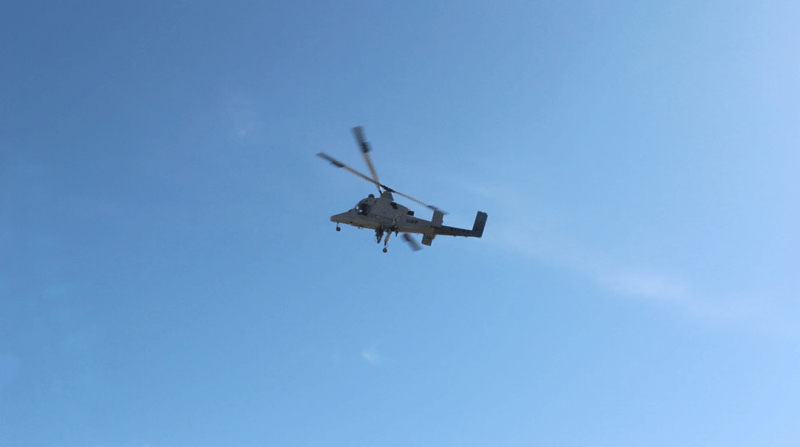Battlefield casualty evacuation is one of the most dangerous operations in the military due to the number of personnel involved, and the care required for wounded soldiers. The team of Neya Systems, Lockheed Martin, and Kaman Aerospace demonstrated a collaborative unmanned air/ground evacuation using the K-MAX cargo helicopter on March 26.

During the demonstration, a distress call led ground operators to send an unmanned ground vehicle to assess the area and location of the injury. Upon successful identification, the ground operators requested airlift by unmanned K-MAX of one individual who was injured. From the ground, the K-MAX operators used a tablet to determine the precise location and a safe landing area to provide assistance to the team. The injured was strapped into a seat on the side of the unmanned K-MAX, which then flew to safety.
Under a variety of SBIR, Navy, and OSD funding, “Neya has been developing interoperable technologies for mission planning, human-robot interface, and UGV and UAV control.” said Dr. Parag Batavia, president of Neya Systems, “Our VERTI Android-based handheld controller, which uses the UCS Architecture, makes interfacing with a broad range of platforms and capabilities straightforward.”
“K-MAX is a mature platform with a UCS-based open architecture that can be adapted to rapidly support and mature capabilities for various missions, including casualty evacuation, for evaluation and transition to the field,” said Jay McConville, Lockheed Martin director of business development for Unmanned Solutions. “Having flown in Afghanistan for nearly three years, delivering more than 4.5 million pounds of cargo, the K-MAX is a proven asset with multi-mission ability able to support our servicemen and women in uniform when needed.”
Neya’s VERTI is based on its UxFleet™ mission management framework. UxFleet allows for heterogeneous air, ground, and maritime platforms to coordinate activities and work towards common mission goals. UxFleet provides a suite of tools that are usable by a broad range of personnel with minimal training to rapidly integrate unmanned systems at different levels of the force structure, from scout platoons and above. UxFleet moves away from traditional “functional” user interfaces, which focus on direct control of specific payloads, platforms, and sensors. Instead, UxFleet presents a context-aware, mission-specific interface that walks the user through the steps required for a particular mission, while allowing them to make changes to critical parameters as the tactical situation changes in real-time.
UxFleet is compatible with a variety of interoperability architectures, including JAUS, IOP, and the UAS Control Segment Architecture (UCS). Our implementation of this effort was based on UCS, which greatly reduced the integration time between Neya and Lockheed, and ensures the reusability of software components that were demonstrated at this event.



